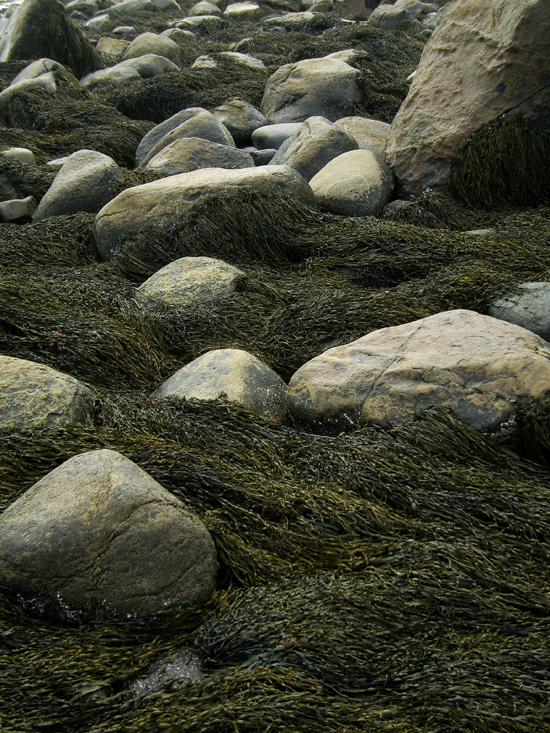Acadian Rockweed

Last week I had the opportunity to shoot some photos of the Maine seashore while on vacation. The Gulf of Maine is known for many things, mainly lobsters, but some less glamorous life-forms are attracting some renewed attention for good reason in this time of finite resources.
Rockweed (Ascophyllum nodosum), a type of fucoid seaweed adorns the barnacled, wave-worn Appalachian rocks along some 3,000 miles of New England seashore. Rockweed serves as a habitat for small invertebrates and fish, which in turn provide nourishment to the many seabirds that make the Gulf of Maine a perfect migratory outpost. Essentially, Rockweed enables an entire food-chain of organisms normally incapable of surviving extreme weather, temperature, and voracious predators to thrive and in turn create a most healthy shoreline.

European colonists quickly found Rockweed to be an excellent agricultural fertilizer, and began harvesting the seemingly endless supply of this “weed.” These days, Rockweed is processed to extract carageenan-like compounds called “alginates” that are used as stabilizer/thickener agents in some our most common day-to-day products like cosmetics, toothpastes, and soups. While commercial benefits of this seaweed are vast, a sustainable harvest is of high priority, considering over-harvesting this macro algae can have negative effects on ecosystems both above and below the water.
